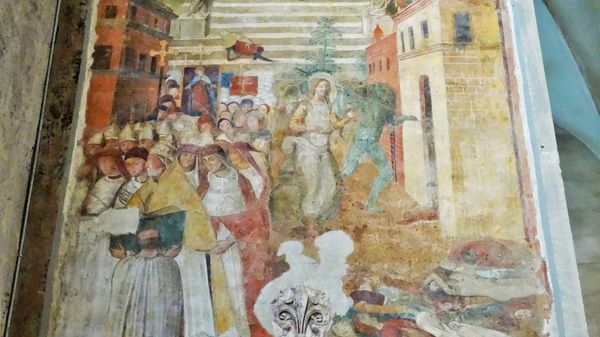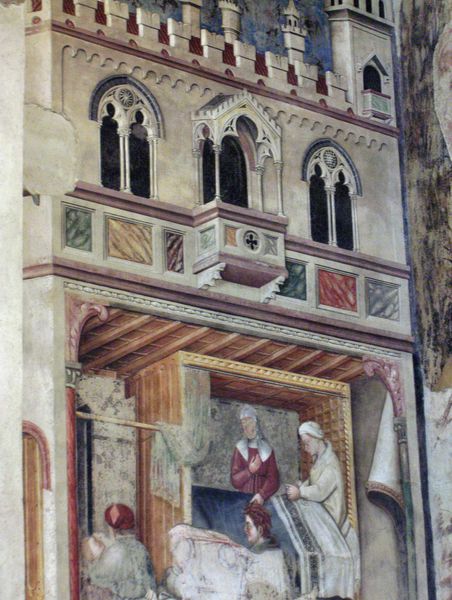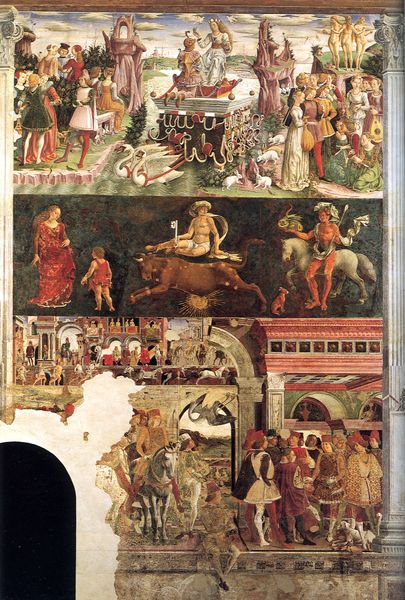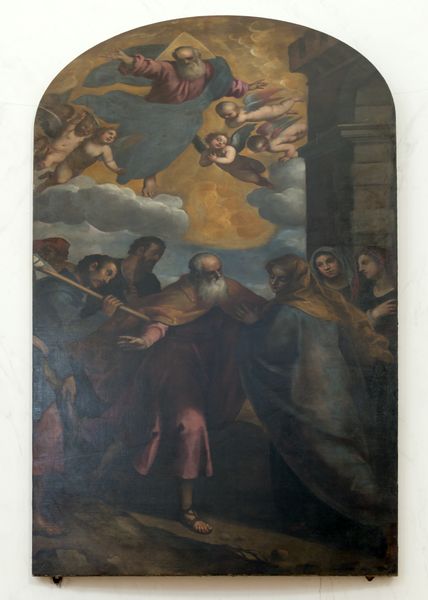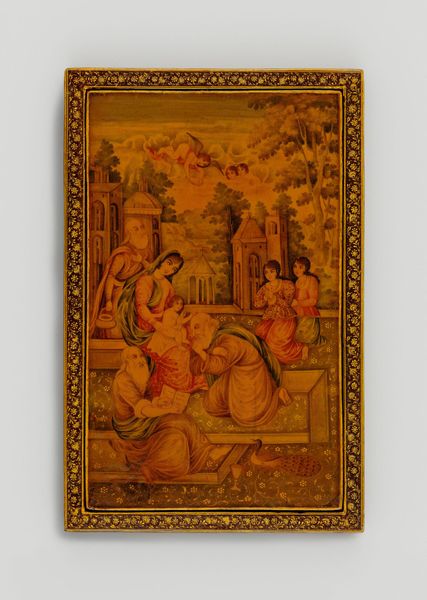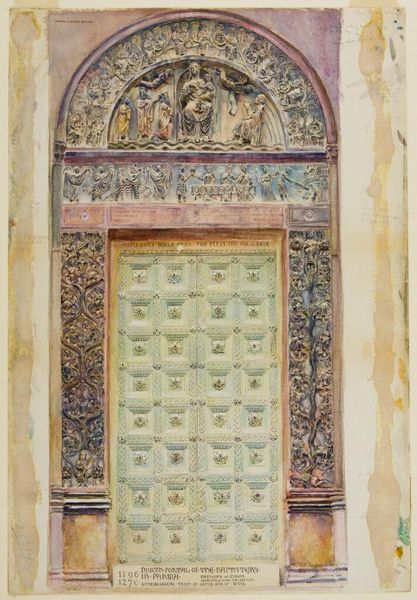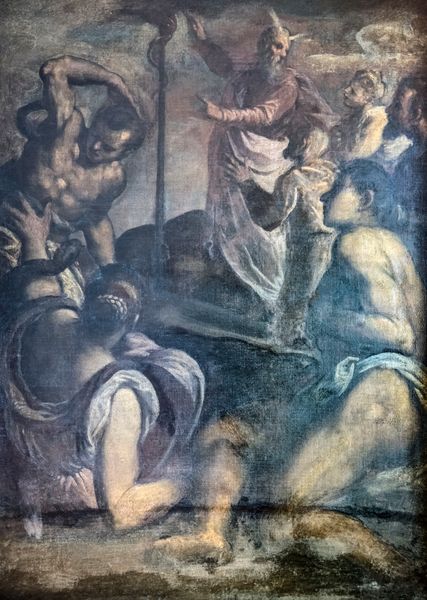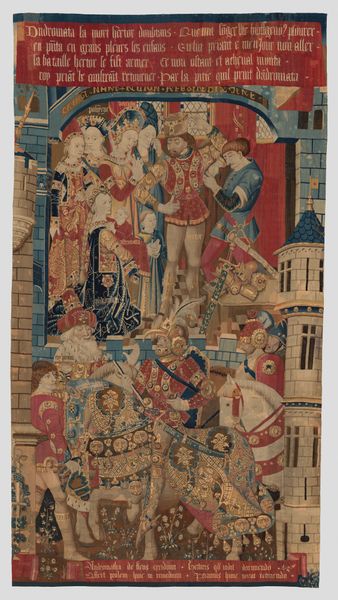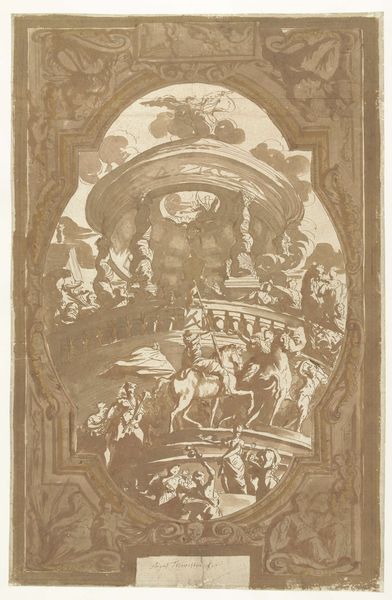
fresco
#
portrait
#
figuration
#
fresco
#
oil painting
#
history-painting
#
italian-renaissance
Copyright: Public domain
Editor: So, here we have "Processione di Sisto IV" by Antoniazzo Romano, created as a fresco during the Italian Renaissance. It's incredibly detailed, capturing a real sense of spectacle, yet it feels like there’s a hidden story waiting to be uncovered. What do you see when you look at this piece? Curator: Beyond the obvious historical depiction, I see a careful construction of power. How is that power portrayed, and who gets to wield it? The architecture itself—the imposing staircase and temple structure—frames the figures at the top, visually reinforcing their authority. But look at the crowd. Are they active participants, or are they merely spectators? Editor: Spectators, I think, arranged in rows. Curator: Precisely! Consider the historical context. The Renaissance saw the rise of powerful families and institutions, all vying for influence. The Papacy, represented here, used art as a tool to legitimize their position and assert their dominance in the face of evolving socio-political paradigms. Where does that place the observer, then and now, in relation to this symbolic demonstration? Editor: That’s a great point. It almost feels like the artist wants us to acknowledge this carefully orchestrated display, making us aware of the mechanisms of power being projected. The fresco also features contrasting depictions of figures being either blessed or slain. It shows opposite sides, almost as a warning for viewers and their position. Curator: Exactly. So how do these artistic choices relate to contemporary conversations about identity, gender, and representation within art? It isn't just about chronicling history; it is about analyzing how that history continues to shape and define our world today. This depiction of a procession invites a critical assessment of historical and ongoing exercises of power, and whose stories get told, and by whom. Editor: That definitely adds layers to what I initially saw. It's no longer just a historical scene, but a commentary on the perpetuation of power. I hadn't thought about it that way before. Curator: These older works were also trying to make a statement that still holds a mirror up to our modern society and cultural environment. They aren't too different, just slightly less relatable at first glance.
Comments
No comments
Be the first to comment and join the conversation on the ultimate creative platform.
